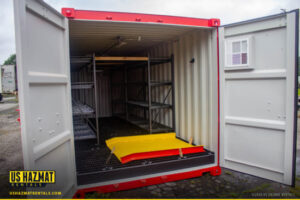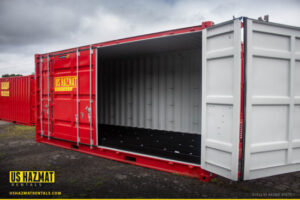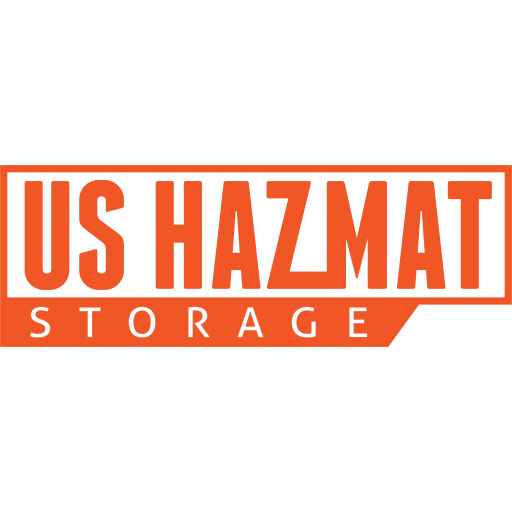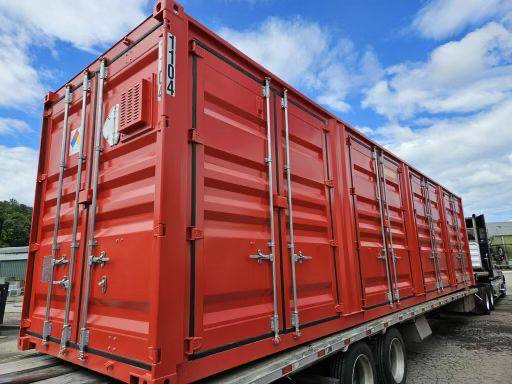Storing flammable chemicals outside OSHA-compliant containers is dangerous and wasteful. Inventory managers should store flammable chemicals in a steel-reinforced container or warehouse, away from incompatible materials. Flammable chemicals react negatively in temperature-sensitive environments and are subject to rapid degradation. Although proper chemical storage protects nearby workers, centralized and compartmentalized storage also ensures thoughtful dispensing and accurate inventorying. U.S. Hazmat Storage provides turnkey flammable chemical protection for all stockpiles for every industry.
Properly Storing Flammable Chemicals Protects Workers, Ecosystems, and Profits

Although China is the world’s leader in chemical incidents, other nations aren’t immune from hazmat storage challenges. Australia’s EPA fined a chemical company $30,000 for stockpiling flammable chemicals outside. External storage poses serious risks to humans and environmental pollution. Breached chemical containers can ooze into streams and waterways while posing errant ignition risks. Companies should store flammable chemicals in a climate controlled environment with spill mitigation. Our flammable chemical storage lockers accommodate all workloads with OSHA compliant features, minimizing explosion and pollution risks.
What EPA officers found when they inspected the Sika factory was incredibly concerning, said EPA Director Operations Adam Gilligan. Chemicals leaking from the damaged reactor vessel were found on the floor, walls and pipework, creating a potentially serious fire risk. We also observed liquid waste stockpiled at the premises in a way that increased the risk of a chemical spill into the environment. We won’t hesitate to act against anyone not taking the utmost care when handling, storing and using chemicals and flammable materials.
Flammable Chemical Storage Guidelines

OSHA says no more than 25 gallons of flammable or combustible liquids may be stored in a room outside of an approved storage cabinet. Additionally, OSHA requires no more than 60 gallons of flammable liquid (flashpoint below 140 degrees F) or 120 gallons of combustible (flashpoint at or above 140 degrees F) can be stored in a single chemical storage container or warehouse. OSHA also requires rated storage safety cabinets when possible. Furthermore, any Category I, II, or III flammable liquids should be kept in closed containers when not in use. NFPA 30 warns against storing more than 120 gallons of Class IB, Class IC, Class II, or Class III liquids in containers. Finally, the NFPA caps any combination of Class IB, IC, or IIIA liquids in metal tanks or metal IBC containers – each not exceeding 793 gallons – at 1,585 total liquid gallons.
Flammable Chemical Classifications
Below are the four primary OSHA flammable liquids classifications, detailing the innate physical properties and pre-existing conditions that pose the greatest flashover risks.
- Category 1 shall include liquids having flashpoints below 73.4 °F (23 °C) and having a boiling point at or below 95 °F (35 °C).
- Category 2 shall include liquids having flashpoints below 73.4 °F (23 °C) and having a boiling point above 95 °F (35 °C).
- Category 3 shall include liquids having flashpoints at or above 73.4 °F (23 °C) and at or below 140 °F (60 °C). When a Category 3 liquid with a flashpoint at or above 100 °F (37.8 °C) is heated for use to within 30 °F (16.7 °C) of its flashpoint, it shall be handled in accordance with the requirements for a Category 3 liquid with a flashpoint below 100 °F (37.8 °C).
- Category 4 shall include liquids having flashpoints above 140 °F (60 °C) and at or below 199.4 °F (93 °C). When a Category 4 flammable liquid is heated for use to within 30 °F (16.7 °C) of its flashpoint, it shall be handled in accordance with the requirements for a Category 3 liquid with a flashpoint at or above 100 °F (37.8 °C). Source: OSHA.gov.


